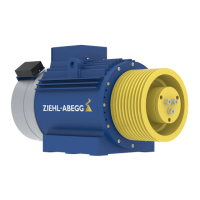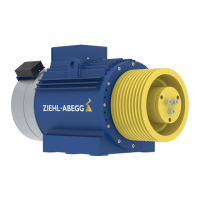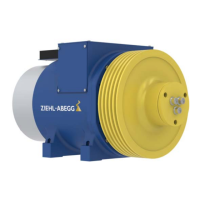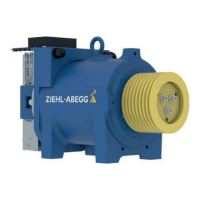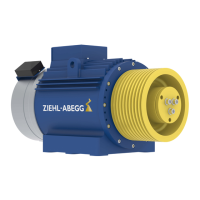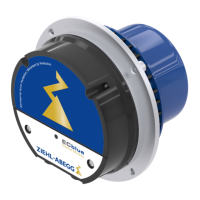To check the brake wear or to check the treaction sheave, the following instructions have to be
referred:
Adjusting the brake is not possible. The brake cannot be re-adjusted. When the maximum permitted
air gap has been reached, the brake blocks must be replaced.
The brake wear has to be checked with the brake closed, therefore:
Make sure that all moving parts have stopped, secure them mechanically if required!
Make sure that the elevator can not be moved from any other person than the one who does the
check!
8.2 Inspection intervals
During commissioning or
after the first 3 months
every year
Distance of the rope guard x x
Check vibration isolation
The thickness of the vibration isolation must be the
same on the right and left.
xx
Checking the air gap of the brake x x
Visual inspection of the mounting screws on the hous-
ing, brakes and traction sheave.
The locking compound must be free of damage.
xx
Check the traction sheave if worn out x
Note: All fixing screws on the housing, brakes and traction sheave are marked with locking varnish.
That means a loosened screw is optically visible. If a screw does get turned, it must be tightened
using the prescribed tightening torque, the old locking varnish needs to be removed and marking has
to be made again.
8.2.1 Checking the air gap
Air gap measurement position
Air gap measurement
1. The air gap "A" has to be measured three times at the circumference (see arrows) of both brakes.
The maximum value of the four has to be taken into account.
2. If the maximum value of the air gap "A" is exceeded on one of the magnets, it must be the br
ake
rotor and the appendant O-ring.
Maximum admissible air gap "A" after wear: 0.9 mm!
Caution!
Feeler gaugh do not introduce more than 10 mm into the air gap, to avoid damage to t
he
dampers
of noise or deterioration by the springs.
Translation of the original operating instructions
ZAtop – model series SM210.60B/SM210.70B Service and maintenance
$7%$B*% ,QGH[ Part.-No. 01013389-GB (EU-BD 1014)
25/88
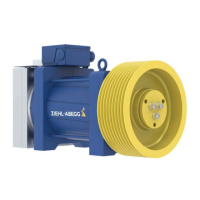
